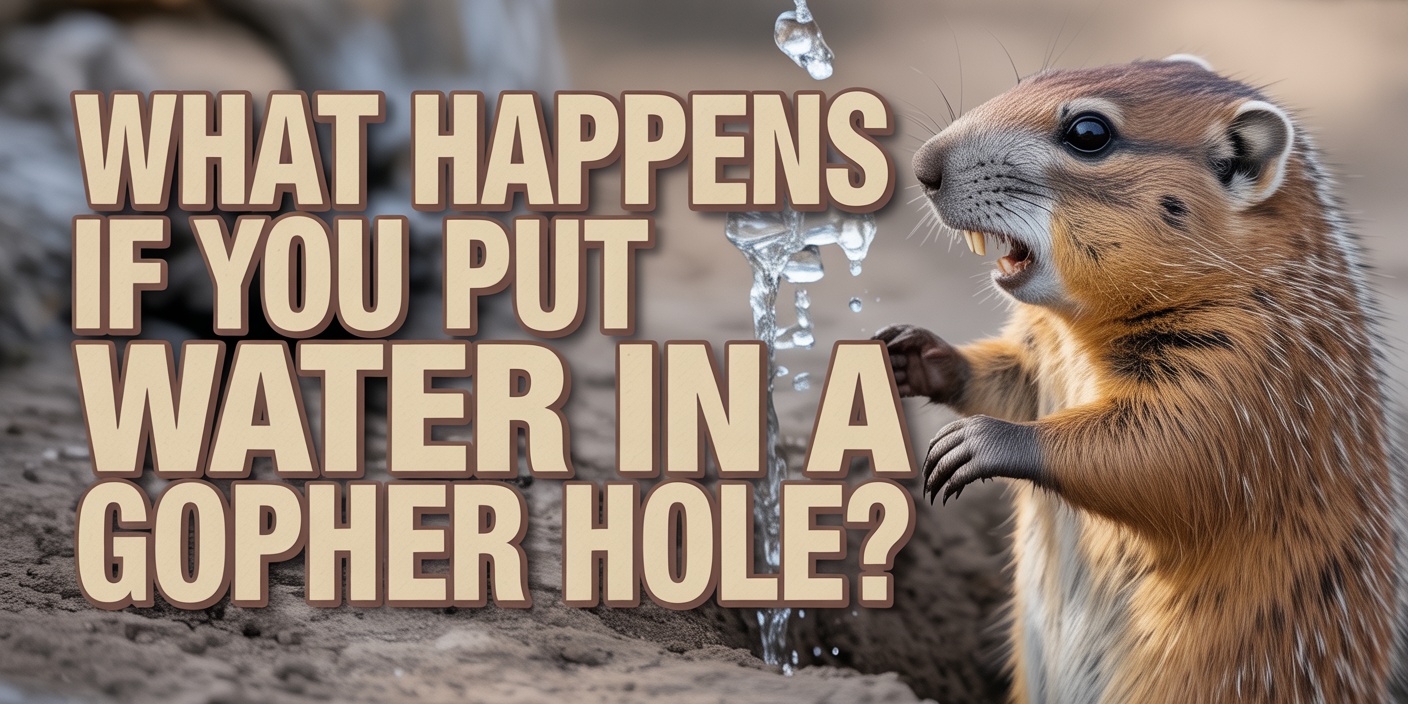If you put water in a gopher hole, it usually seeps into the soil or drains through other tunnel exits. Gophers often escape unharmed, making flooding an ineffective way to get rid of them.
Homeowners dealing with gophers often wonder if flooding their tunnels is a quick fix. The idea seems simple: fill the burrow with water and force the animal out.
In reality, gopher tunnels are complex and built to withstand challenges like rain or irrigation. This means water rarely solves the problem and often leaves you with wasted effort, soggy soil, and frustrated results.
Learn more: What can I put in a gopher hole to get rid of it?
What Actually Happens When You Flood a Gopher Hole?
When water is poured into a gopher hole, it spreads through the tunnel system but rarely traps the animal. Gophers instinctively retreat to higher chambers or use secondary exits to escape, leaving the flooding attempt unsuccessful.
Their burrows are designed with multiple passageways and air pockets, making it difficult to reach them fully with water. At most, you may see temporary disruption, but the gopher usually survives and continues its activity once conditions settle.
Why Flooding Gopher Holes Doesn’t Work Long-Term?
Gopher burrow systems can stretch hundreds of feet with multiple layers, chambers, and hidden escape routes. Pouring water into one hole may affect a small section, but it won’t reach the entire tunnel network.
Even if a gopher is disturbed by the flooding, it typically returns once the water drains into the soil. This means the damage to lawns and gardens continues, proving that flooding is only a short-term disruption rather than a solution.
Risks of Pouring Water in Gopher Holes
Flooding gopher holes can be wasteful, as large amounts of water often fail to reach the intended areas. This not only uses valuable resources but can also result in soil erosion or damage to nearby plants.
Additionally, the displaced water can create muddy, unsightly conditions in your yard. The flooding may also attract other pests, further complicating the situation and potentially leading to more problems down the line.
Humane and Effective Alternatives
Instead of flooding, humane trapping is a more reliable method for removing gophers. Professional traps are designed to capture the animals safely and allow for relocation, ensuring that you don’t harm the gopher or the environment in the process.
Additionally, preventing gopher entry with underground barriers can protect your garden and lawn long-term. Barriers, like buried wire mesh or hardware cloth, can be placed around vulnerable areas, keeping gophers out and reducing the need for frequent interventions.
Why Call Professional Wildlife Control Instead?
Professional wildlife control services, like AAAC Wildlife Removal, offer effective and humane solutions for gopher problems. Experts understand gopher behavior, their burrow patterns, and the best methods to safely remove them from your property without causing further damage.
Professional services also provide long-term prevention strategies that go beyond temporary fixes like flooding. From trapping to barrier installation, experts can offer tailored solutions that ensure your yard stays protected and gopher-free.
Effective Solutions Beyond Flooding Gopher Holes
Flooding gopher holes may seem like a quick solution, but it’s rarely effective and often creates more problems than it solves. Gophers are adept at escaping, and the water doesn’t fully disrupt their complex tunnel systems.
For lasting results, it’s best to address the issue with proper prevention and professional help. AAAC Wildlife Removal provides safe, effective gopher removal and prevention strategies to ensure your property remains intact and pest-free.
Call AAAC Wildlife Removal for Expert Gopher Control!
If gophers are causing damage to your yard or garden, don’t rely on temporary fixes like flooding. AAAC Wildlife Removal offers humane, effective gopher removal services and long-term prevention solutions tailored to your property.
Our experienced team uses proven methods to safely remove gophers and protect your landscape.




